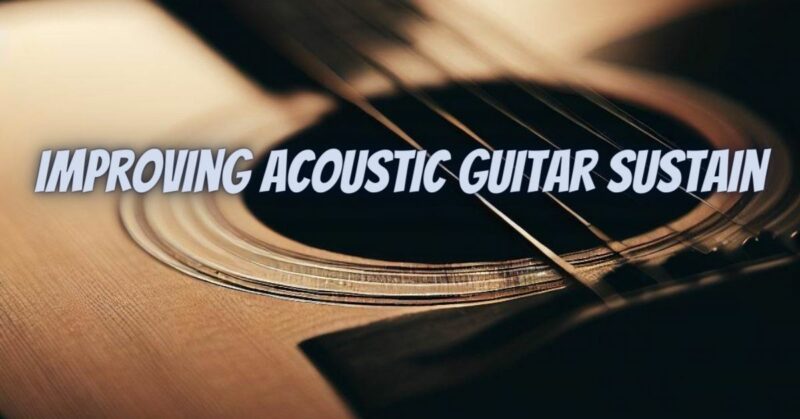Sustain is a sought-after quality in acoustic guitars, allowing notes to ring out, creating beautiful and expressive music. If you’re looking to enhance the sustain of your acoustic guitar, there are several techniques and adjustments you can explore. In this article, we’ll delve into ways to improve the sustain of your acoustic guitar for more resonant and captivating performances.
1. Choose the Right Guitar
The foundation of great sustain starts with the guitar itself. Different acoustic guitars can vary significantly in their sustain characteristics. Consider the following factors when selecting a guitar:
- Tonewood: The type of wood used for the top, back, and sides of the guitar can impact sustain. Spruce tops, for example, often produce clear and resonant sustain.
- Body Size: Smaller body guitars may have less sustain compared to larger ones due to differences in the soundboard’s size and the amount of air they can displace.
- Build Quality: High-quality craftsmanship can contribute to better sustain. Well-built guitars with precise construction tend to have longer, more resonant sustain.
2. String Selection and Maintenance
The choice of strings can significantly affect sustain. Experiment with different string brands and types to find those that provide the sustain you desire. Phosphor bronze strings are known for their balanced tone and sustain.
Additionally, ensure that your strings are well-maintained. Old, worn-out strings tend to lose their sustain capabilities. Regularly change strings to keep your acoustic guitar sounding its best.
3. Proper Setup and Action
A well-maintained setup is essential for optimizing sustain. Ensure that your guitar has the appropriate action (string height above the fretboard). A professional setup can address issues like high action, which can negatively impact sustain.
4. Fret Leveling and Dressing
Over time, frets can develop wear and inconsistencies. If you notice buzzing or dead spots on your fretboard, it’s essential to have your frets leveled and dressed by a qualified technician. This process can improve string contact and sustain.
5. Nut and Saddle Adjustments
The nut and saddle are critical contact points for the strings. A well-cut nut and saddle can enhance sustain by ensuring optimal string vibration. If necessary, consider having these components professionally adjusted or replaced with high-quality materials like bone or Tusq.
6. Fingerpicking Technique
Your playing technique plays a crucial role in achieving great sustain on an acoustic guitar. Practice fingerpicking techniques like fingerstyle and Travis picking, which allow you to control the duration of each note. This control can help you maximize sustain when needed.
7. Capo Placement
Experiment with capo placement on the fretboard. Placing the capo closer to the body can shorten the vibrating length of the strings, potentially enhancing sustain and creating unique tonal qualities.
8. Playing Dynamics
Pay attention to your playing dynamics. Applying controlled vibrato, bends, and slides can help sustain notes and chords and add expressiveness to your playing.
9. Use of Effects and Amplification
If you play an acoustic-electric guitar, consider using effects pedals like reverb or delay to enhance sustain. These effects can create a more ambient and resonant sound, especially in live performances.
10. Room Acoustics
The acoustics of the room you’re playing in can influence sustain. Experiment with different playing environments to find spaces that enhance sustain, such as rooms with natural reverb or acoustic resonance.
Improving the sustain of your acoustic guitar is a rewarding journey that involves a combination of factors, from selecting the right instrument to refining your technique and optimizing the setup. By exploring these techniques and adjustments, you can unlock the full potential of your acoustic guitar, creating captivating and resonant music that resonates with your audience. Remember that sustain is not just about duration but also about the emotive power it brings to your music


